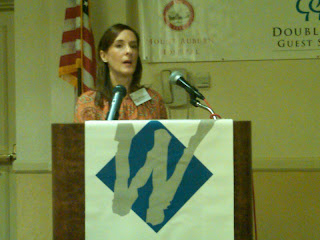Getting the media to pay attention to a company announcement is one part common sense, one part timing, and one part luck (you don’t want to be competing for attention with the news about AOL’s acquisition of TechCrunch). Luck aside, there are some things you can do to increase the chances that the media will take notice and prioritize your news over the hundreds of press releases they see each day. And because we learn better from mistakes, I have created a list of the top nine things we regularly see companies doing wrong. Some of these may seem like common sense, but I assure you, they have happened more times than I can count to have made it onto this list.
1. Issue a press release virtually every week. There’s nothing like crying wolf to show the media that you don’t understand what constitutes news. But if search engine optimization (SEO) is all you care about, go ahead and put out a release on your new Web site. Just don’t send it to reporters and ask them to write about it. No one cares (except for your employees and maybe your parents).
2. Begin your release with “the leading provider of,” “next generation” or “best of breed.” No one believes you and these phrases have been used so many times that they are virtually meaningless. 1999 has come and gone.
3. Don’t return reporter calls (or return them tomorrow). If you are pushing out news, you need to be available for interviews — within the hour. Announcement day is not the time to be “stuck in a meeting.”
4. Break your own embargo. Embargoes result in better and more in-depth coverage (read more on our position on embargoes here). However, to make them work it’s incumbent upon the company putting out the news to do everything possible to stick to the embargo time. This means that you MUST coordinate timing for all launch elements with the time you issue your press release. I cannot tell you how many times we’ve seen companies post news on their own blog at midnight the night before launch day. This results in some very unhappy reporters, and a lot less coverage for the company.
5. Ignore the definition of “exclusive.” If you give a reporter a story exclusively, that means that they are the ONLY outlet you are talking to. Exclusive = one reporter. It’s as simple as that. Ignoring this rule is a surefire way to ensure that reporters will never talk to you again.
6. Issue a three-page press release that is a replica of your marketing brochure. Get to the point and do it quickly. Press releases should cover the highlights and include links for additional information. And remember, a press release is not marketing collateral. It should be written like a news story, which means it should contain just the facts and reserve color commentary to the quotes.
7. Send out software for review with major bugs. In this case, you’ll get coverage. It just won’t be the kind you want. Yes, this has happened more times than I’d like to recall.
8. Blast out your press release. If you find yourself sending out mass emails and @ messaging every reporter and influencer on Twitter with your press release, cease and desist. Read what reporters and bloggers write and make sure that your news is relevant – and tell them why. Look to see if they have a page on how they prefer to be contacted, and follow their advice. On Twitter, @ message the people you care most about reaching with Tweets that are relevant to them. If you use the same 140 characters for every message about your launch, you will quickly lose the followers you’ve tried hard to build up. Social media is about conversations, so make sure you treat it as relationship building, not a medium for broadcasting your message.
9. Choose a launch date that coincides with a major holiday. Only Apple can take on Jesus, and they successfully launched the iPad over Easter weekend this year. If you are not in the same league as Apple, pick a date when reporters and bloggers will be in the office and paying attention.

